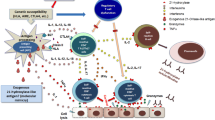Abstract
Four patients with tyrosinemia type 1 (ages 6–32 months) were treated with 2-(2-nitro-4-trifluoro-methylbenzoyl)-1,3-cyclohexandion (NTBC) at Cairo University Children’s Hospital, Egypt and followed up for 12–27 months. The recommended average dose of NTBC is 1 mg/kg/day. They were started on the following doses: 0.8, 0.58, 0.5, and 0.625 mg/kg/day, respectively. Two months after start of therapy, succinylacetone was undetectable in patients 1, 2, and 4, while in case 3, it was 5.4 μM. Her NTBC dose was increased from 0.5 to 0.65 mg/kg/day, and succinylacetone was undetectable 1 month later. They were kept on NTBC doses ranging from 0.55 to 0.65 mg/kg/day. These doses allowed catch up growth, normalization of synthetic liver functions, steep drop in serum alpha fetoprotein, reduction in phosphate loss in urine, normalization of serum calcium, phosphate, and alkaline phosphatase, and healing of active rickets. Succinylacetone was undetectable in urine on these doses. In conclusion: Doses of NTBC, lower than recommended, may be helpful in treatment of tyrosinemia, on condition that succinylacetone production is suppressed, and AFP is maintained normal or showing a progressive decrease. This cost-effective dose may allow treatment of affected children from economically underprivileged countries, but longer follow up periods are needed.
Similar content being viewed by others
Abbreviations
- AFP:
-
Alpha fetoprotein
- ALT:
-
Alanine aminotransferase
- AP:
-
Alkaline phosphatase
- AST:
-
Aspartate aminotransferase
- DBS:
-
Dry blood spot
- GGT:
-
Gamma-glutamyl transpeptidase
- NTBC:
-
2-(2-Nitro-4-trifluoro-methylbenzoyl)-1,3-cyclohexandion
- P:Cr:
-
Phosphorous to creatinine
- PT:
-
Prothrombin concentration
References
McKiernan PJ (2006) Nitisinone in the treatment of hereditary tyrosinaemia type 1. Drugs 66:743–750
Labelle Y, Phaneuf D, Leclerc B et al (1993) Characterization of the human fumarylacetoacetate hydrolase gene and identification of a missense mutation abolishing enzymatic activity. Hum Mol Genet 2:941–946
Lindblad B, Lindstedt S, Steen G (1977) On the enzymatic defects in hereditary tyrosinemia. Proc Natl Acad Sci USA 74:4641–4645
Mitchell GA, Grompe M, Lambert M, Tanguay RM (2001) Hypertyrosnemia. In: Scriver CR, Beaudet AL, Sly WS, Valle D (eds) The metabolic and molecular bases of inherited disease, 8th edn. McGraw Hill Co, New York, pp 1777–1806
Bijarnia S, Puri RD, Ruel J et al (2006) Tyrosinemia type 1—Diagnostic issues and prenatal diagnosis. Indian J Pediatr 73:163–165
Kvittingen EA (1986) Hereditary tyrosinemia type 1—an overview. Scand J Clin Invest Suppl 184:27–34
Holme E, Lindstedt S (1998) Tyrosinemia type 1 and NTBC. J Inherit Metabol Dis 21:507–517
Lindstedt S, Holme E, Lock EA et al (1992) Treatment of hereditary tyrosinaemia type I by inhibition of 4-hydroxyphenylpyruvate dioxygenase. Lancet 340:813–817
Paradis K, Weber A, Seidman EG et al (1990) Liver transplantation for hereditary tyrosinemia: the Quebec experience. Am J Hum Genet 47:338–342
Santra S, Baumann U (2008) Experience of nistinone for the pharmacological treatment of hereditary tyrosinemia type 1. Epert Opin Pharmacother 9:129–136
Joshi SN, Venugopalan P (2004) Experience with NTBC therapy in hereditary tyrosinaemia type I: an alternative to liver transplantation. Ann Trop Paediatr 24:259–265
Holme E, Lindsedt S (2000) Nontransplant treatment of tyrosinemia. Clin Liver Dis 4:805–814
Jenkins J (2002) Orphadin. FDA.gov. Available via http://www.fda.gov/cder/foi/label/2002/21232lbl.pdf. Accessed 10 July 2008
Roth KS (2007) Tyrosinemia (emedicine website). Available via http://www.emedicine.com/ped/TOPIC2339.HTM. Accessed 10 July 2008
Al-Dirbashi OY, Rashed MS, Brink HJ et al (2006) Determination of succinyl acetone in dried blood spots and liquid urine as a dansylhydrazone by liquid chromatography tandem mass spectrometry. J Chromatogr B Analyt Technol Biomed Life Sci 831:274–280
Author information
Authors and Affiliations
Corresponding author
Rights and permissions
About this article
Cite this article
El-Karaksy, H., Rashed, M., El-Sayed, R. et al. Clinical practice. Eur J Pediatr 169, 689–693 (2010). https://doi.org/10.1007/s00431-009-1090-1
Received:
Accepted:
Published:
Issue Date:
DOI: https://doi.org/10.1007/s00431-009-1090-1




